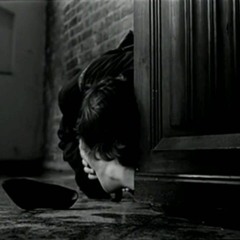

The promotion of archaeological research focused on children will not only lead to a more rounded understanding of children from early medieval England, but also of young people from other points in history.Andrew Sacher and Wyatt Marshall of BrooklynVegan wrote that "the album falls somewhere between goth, noise, shoegaze and post-punk." They also described the album as "addictively melodic for such dark music." Organisations such as The Society for the Study of Childhood in the Past (SSCIP) champion research that focuses specifically on children in the past, and the important roles they played in society. Looking to the futureĮven though researchers are starting to pay more attention to children from early medieval contexts, the development of osteological techniques – which are used to analyse skeletal remains – and advances in analytical methods will allow us to learn more about the youngest members of early medieval society. This could explain why this demographic pairing is most common. Instead, individuals may have been buried together as they shared social attributes, such as ideological beliefs, or kin ties.Īrchaeologist Nick Stoodley has suggested that the caring responsibilities of adults extended to the afterlife. But we cannot assume that individuals found in multiple burials were blood relatives. The most frequent demographic pairing when this took place was of an infant or child and an adult. They were included in household burial plots among groups who practised cremation.įurthermore, when children were sometimes buried alongside adults in what is known as the “multiple burial rite”. Therefore, increased interaction with animals and greater economic contribution may have warranted the endowment of animals or a wider range of objects at the funeral.Įven though children were socially distinct from older individuals, they were clearly cared for. This would marry up with a law written in the seventh century AD which states that individuals over ten years of age were old enough to manage their family’s land and property. Some of these roles are likely to have involved the management of livestock and participation in other economic activities, such as crafting.

This potentially suggests that people were given longer knives or taller pots as they passed through key stages of life.Īdolescence was a crucial time in a young person’s life as they took on new roles and responsibilities. Interestingly, the cremated remains of infants and children were buried in shorter urns, while their contemporaries from inhumation cemeteries were interred with shorter knives than adolescents and adults. The more restricted range of objects found with children possibly indicates their different social status, roles within the household, and identity in life.
#BURIAL SOCIETY HAVE A NICE LIFE PORTABLE#
The Portable Antiquities Scheme/ The Trustees of the British Museum via Wikimedia Commons, CC BY-SA In addition to the items buried with children, adult males were sometimes found with weapons, such as swords, shields, and spearheads, while adult females were typically buried with jewellery, including different types of brooches.Īn example of an early medieval bead found in graves. They were also more likely to be found with a narrower range of artefacts, including beads, rings, combs, knives and spindle whorls, than older members of the community. Children were most likely to be gifted sheep or goat, or pig offerings at the funeral. Analyses have shown that infants and children under 12 years of age were less likely to be buried with animal offerings and, where they were, a narrow range of species were gifted to the young individuals. Regardless of the funerary rite bestowed on children, there are similarities in the objects that were bestowed and buried with these individuals. They can also contain animal bones belonging to a range of species, such as horses, cattle, pigs, dogs, birds, and bears. Grave provisions from early medieval burials include jewellery and combs, knives and pottery vessels.

The objects buried with people provide important clues about their lives. The deceased was buried in a grave with artefacts of relevance to their identity in life. The other type of burial was a more straightforward affair. In some cases, additional unburned items, such as bone combs, were added to the urn before burial. Cremated bone deposits are found in buried pottery urns: the dead were cremated on an open pyre, accompanied by objects and animal offerings. There are two types of burial from this period.


 0 kommentar(er)
0 kommentar(er)
